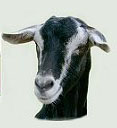|
Getting your first horse or pony
|
The History of Riding
The first true horse was pony-sized and was hunted for its meat by Cro-Magnon humans. Fast moving and agile this early horse was one of the more attractive and gentle-natured creatures of its time. That may be why the horse eventually became so much more than just a food source. Although current attitudes towards horses make it difficult to imagine, that horses once meant dinner to humans. Earlier humans were known to run horses off cliffs to their death, where they would become dinner for several nights. That all began to change when humans started to see horses as pack animals and good transportation rather than a food source. During the Neolithic period in Eurasia, in about 4,000BCE, earlier humans moved from life as hunter-gathers to farming, raising and domesticating herds of animals for meat. People of that time were known to have tamed various animals and even kept them as pets. Taming horses probably made them easier to handle as food animals, but there docile nature helped there role with humans evolve, and it was soon discovered that these animals were useful for work. The horse became even more valuable when farmers discovered that it was easier to control a herd of horses when sitting on top of one.
Early Tack There is evidence that horses were first ridden as much as 5,000 or more years ago. This evidence is from bits being found in archaeological dig sits. Horse skeletons were also found that indicate the horse had tooth wear from a bit. Early riders clung to horses with little say in where they went, but they were determined to establish control. Some of the earliest tack shows these first equestrians discovered that if they could literally rein in the front part of the horse, the rest would follow. Simple bridles from this time and nothing more that sinew places around the nose or rawhide looped around the lower jaw. These simple bridles have been found around the Black Sea. Once the horse could be controlled humankind's horizon expanded, with civilization migrating southward to the "fertile crescent" area of the Near East. By the second millennium, horses were pulling chariots throughout Greece, Egypt, Mesopotamia and even China. In the Near East, humans were sitting on top horses too. Horsemanship began to take on a new importance because horses were useful in warfare and hunting. As our relationship with horses developed so did their tack. The Chinese have been credited in developing the stirrup and the horseshoe. Some of the earliest true bits, developed around 1,500BCE, were discovered in the Near East. Horses were a commodity enjoyed by the wealthy and the powerful. Chariots, adorned for royalty, were a representative for of wealth and importance. The horses that pulled them were similarly decorated, with anything from simple head plumes to elaborate bronze harness-work. The horse quickly became a status symbol.
Early War From as early as 1,500BCE, the power of the horse was being exploited by armies. From the Near east to the Mediterranean, the horses stamina and strength were used to conquer nations. Horsemanship, carried on by the needs of warring nations, reached a new level. Egyptians and Hittites were great empire-builders of the time. A cuneiform written around 1,345BCE, describes how a Hittite horseman named Kikkuli selected, trained and conditioned horses for war. His writing showed how he selected horses without breathing disorders. He even developed nutrition plans with careful measurements of oats, barley, hay, chaff, and salt. It was clear that Kikkuli understood the horse's physiology and psychology. His methods could still be used today.
Horses | Ponies | Horseback Riding | Riding Styles | Breeds From A-Z Color and Markings | Horse Types | Toys Horses
|
||||
|---|---|---|---|---|---|
The Material contained herein may not be reproduced without the prior written approval of the author. Contents & Graphics Copyright © Horses With Amie (C) 2006-. All Rights Reserved. Our work is not Public Domain. |

